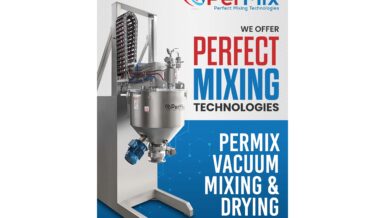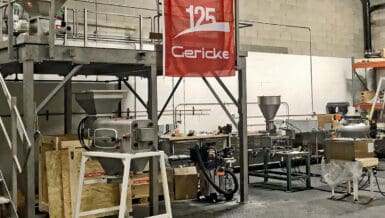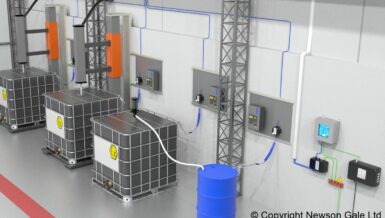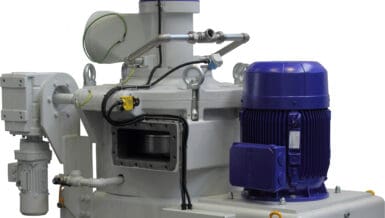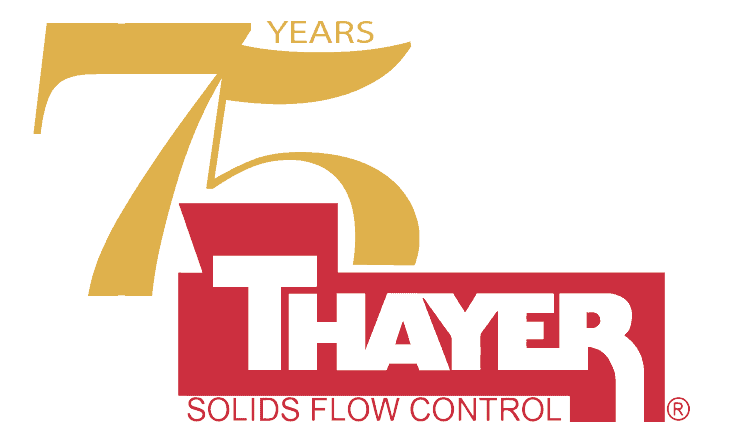Further development of this technology has brought to the fore the newest member among its products, the IR-FRESH® – a modular system for the safe and efficient reduction of unpleasant odours in plastics.
In the first process step, an infrared module installed above the material bed heats the material quickly and directly to the optimum temperature level for the plastic in question. In this process, the continuous rotation of the drum ensures a homogeneous mass flow with a defined dwell time (applying the first-in/first-out principle). By means of the rotating and mixing elements integrated in the spirals, the material is continuously mixed in the drum with constant surface exchange. Combined with controlled heating, this ensures considerable odor elimination, even within a very short residence time.
In the second process step, the remaining odorous substances in the regrind or granules are removed by a thermal-physical cleaning process in the IR-FRESH® CONDITIONER. This IR-FRESH® CONDITIONER – an insulated hopper – keeps the material to be decontaminated within a temperature range that’s ideal for the decontamination process by means of a hot purge gas. Excellent results for deodorization and decontamination can be achieved through the interaction of the main process parameters of airflow, temperature, and residence time. The decontamination results of two different material flows are shown here as examples.
HDPE flakes recovered from fuel containers have been treated with the IR-FRESH®:

Another application example is the odor reduction of PCR-HDPE regrinds, which have been produced from the yellow plastic sacks used for household collection of recyclable plastic waste in Germany. These regrinds are afterward to be used again as, for example, bottles for packaging. If used for this purpose, it is important to minimize the residual odor of the regrind.
Limonene is regarded as the reference substance for PCR compounds and has been determined analytically by gas chromatography.

Additionally, a comparison of chromatograms – before and after treatment in the IR-FRESH® – demonstrates the impressive decontamination capacity of the system developed by KREYENBORG


Through its modular design, the IR-FRESH® process can be used continuously in two stages both for regrind – before the extrusion process – and for granules – after the extrusion process. Likewise, it is also possible to integrate the IR-FRESH® CONDITIONER as a sole process step in the process chain, or to operate it as a stand-alone solution continuously, as well as discontinuously.
The system presented is also suitable as a retrofit solution for integration in existing plants. In cooperation with the customer, KREYENBORG will develop a solution – also in conjunction with pilot plant trials – that is optimally tailored to the customer’s individual processing needs Visit KREYENBORG at booth 9-A27 at the K 2022 Trade Fair where they’ll be presenting the IR-FRESH® process.






